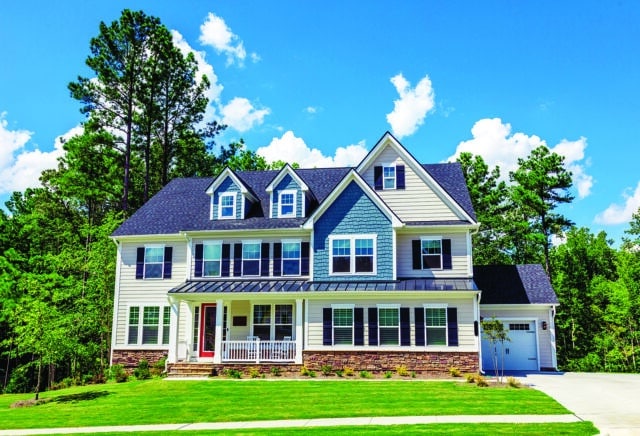
After a decade of tower-building in Boston has failed to hold down area home prices, is it time for those with YIMBY sympathies to focus on suburban zoning reform?
Here’s a startling statistic that should be a cause for celebration among anyone rooting for more housing and lower prices.
As a percentage of its overall housing stock, Boston is now building more housing than Houston, long touted for its wide-open land use laws, expansive inventory of new housing, and far more reasonable prices, according to Alan Mallach, a senior fellow at the Center for Community Progress and the National Housing Institute.
Over the past five years, Boston has been issuing building permits for new housing at a rate at least 25 percent to 30 percent higher than the national average, significantly better than San Francisco and on par with Washington, D.C. and Minneapolis, Mallach notes in a recent piece for Shelterforce Magazine.
At the top of the heap, are Seattle, Austin and Denver, who are building new condos, homes and apartments at 2.5 times or more the national average.
Yet all that housing in all those hot-to-trot downtowns have yet to bring down housing prices, either within city limits or in their wider suburban appendages.
In fact, prices, if anything, appear to be accelerating in the wake of the pandemic, which is exacerbating a now decades-long shortage of listings amid an initial pullback by sellers and some builders as well.
It all leads to an uncomfortable conclusion.
Like that Johnny Lee country hit about misbegotten love way back in 1980, maybe we’ve spent years looking for new housing in all the wrong places?
Towers Not Meeting Needs
That’s certainly what Mallach clearly thinks.
The debate over zoning has been heavily urban-centric, with cities like Boston pushing to remove barriers and build, build, build. After all, one of the first initiatives of Boston Mayor Marty Walsh’s administration was to launch a rezoning of the entire city.

The large lots required in many Greater Boston suburbs may have to be abandoned in order to address the state’s inventory shortage.
Yet the suburbs, where sweeping zoning reform is needed, have gotten off relatively lightly.
“Most of the zoning conversation is missing if not the entire point, a big part of it,” Mallach writes. “Spoiler alert: The real zoning issue is what happens in the suburbs.”
Simply put, building thousands of new units of luxury residential housing in city centers is not going to do much to rapidly lower prices, not inside city limits and definitely not in the suburbs, where the vast majority of Greater Boston’s population lives.
Faced with this reality, some activists have cast the luxury condo building boom as a destructive force that has widened inequality.
While it’s arguable whether we need a whole lot more towers with multimillion-dollar units, the building boom has helped to meet demand for more housing at the high end of the market.
It is where both the economic demand and growth is right now. Boston and a handful of other New Economy cities have become hubs for high-tech and life sciences firms, as well as an array of investment and financial services companies, that pay handsome salaries.
Rather the real problem is the perception, fostered by both big–city mayors and top business leaders, that all those countless thousands of new luxury condos are contributing to the larger and laudable goal of boosting overall housing supply and bringing down prices, even if indirectly.
But that belief is increasingly unsupported by what’s happened with condo prices and rents in Boston, which have not only continued to soar downtown, but have gone skyward in once blue-collar havens like South Boston, Charlestown and Jamaica Plain.
Time for a Fight
All that new housing downtown is helping meet a very real need, but it’s a narrow one, meeting a surge in demand on the high-end from buyers with incomes well into the six-figures.
That’s the disconnect right now, and it’s a big one.
Bringing down rents and prices in the suburbs – or for that matter, in Boston’s remaining middle- and working-class neighborhoods – calls for an entirely different solution, starting with zoning reform.
In his piece, Mallach points to Gov. Charlie Baker’s proposal, long stalled on Beacon Hill, that would enable communities to pass zoning changes to open the door to new housing with a simple majority, down from the daunting two-thirds majority now needed.
“If adopted, it would have probably had little more than symbolic value, but it nonetheless withered and died in the state legislature,” Mallach wrote, adding “these are modest, barely visible gestures compared to what is needed.”
While I think that’s a bit harsh, if and when Baker’s zooming proposal passes, it represents just the start of what needs to be a much more ambitious revamp.

Scott Van Voorhis
More middle-class housing is needed, and that means smaller homes – cheaper to build – on much smaller lots – cheaper to acquire – plus cluster zoning, which can pave the way for dozens of homes to be built on a relative handful of acres, preserving other land on the parcel as open space.
Given the vast majority of suburban communities across Greater Boston right now are hanging onto large–lot zoning – with each house taking up a half-, one or even two acres and costing seven figures to buy, it will take a long, hard and fierce battle to get there.
But if there is a fight that ever needed to be fought, this is certainly one.
Scott Van Voorhis is Banker & Tradesman’s columnist; opinions expressed are his own. He may be reached at sbvanvoorhis@hotmail.com.





